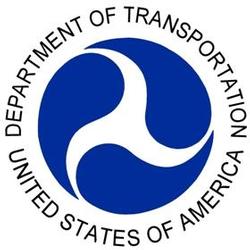
BTS releases October 2014 North American freight numbers
U.S.-NAFTA freight totaled $108.2 billion in October 2014 as three transportation modes – air, rail, and trucks – carried more U.S.-NAFTA freight than in October 2013, according to the TransBorder Freight Data released today by the U.S. Department of Transportation’s Bureau of Transportation Statistics (BTS). October 2014 was the highest month on record for the value of U.S.-NAFTA trade flows, not adjusted for inflation.
Freight by mode
In October 2014 compared to October 2013, the value of commodities moving by truck grew by the largest percentage of any mode, 7.2 percent. Air freight increased 4.9 percent followed by rail at 2.4 percent. The two modes that move the most mineral fuels saw their total value of shipments decline on a year-over-year basis: pipeline by 1.2 percent and vessel by 7.6 percent.
Of the $5.1 billion increase in the value of U.S.-NAFTA freight from October 2013, truck freight contributed the most, $4.4 billion, followed by rail, $0.4 billion.
Trucks carry three-fifths of U.S.-NAFTA freight and are the most heavily utilized mode for moving goods to and from both U.S.-NAFTA partners. Trucks accounted for $33.8 billion of exports and $32.3 billion of imports.
Rail remained the second largest mode, moving 15.1 percent of all U.S.-NAFTA freight, followed by vessel, 7.7 percent; pipeline, 7.3 percent; and air, 3.8 percent. The surface transportation modes of truck, rail and pipeline carried 83.5 percent of the total U.S.-NAFTA freight flows.
U.S.-Canada freight
Year-over-year, the percent change in the value of U.S.-Canada freight moved by truck increased the most of any mode, growing 4.7 percent. Freight moved by air increased 1.7 percent and rail by 0.7 percent. Freight moved by pipeline decreased 2.6 percent and vessel decreased 14.7 percent, mainly due to lower mineral fuel prices.
Trucks carried 54.8 percent of the $58.6 billion of freight to and from Canada, followed by rail, 16.1 percent; pipeline, 12.8 percent; vessel, 4.9 percent and air, 4.5 percent. The surface transportation modes of truck, rail and pipeline carried 83.7 percent of the total U.S.-Canada freight flows.
U.S.-Mexico freight
Year-over-year, the value of U.S.-Mexico pipeline freight rose 33.2 percent, the largest percentage increase of any mode, due to an increase in U.S. exports of mineral fuels. Freight moved by air increased 11.1 percent; truck, 9.6 percent; and rail 4.9 percent. Freight moved by vessel decreased 3.3 percent.
Trucks carried 68.5 percent of the $49.7 billion of freight to and from Mexico, followed by rail, 13.9 percent; vessel, 10.9 percent; air, 3.0 percent; and pipeline, 0.8 percent. The surface transportation modes of truck, rail and pipeline carried 83.2 percent of the total U.S.-Mexico freight flows.
See BTS Transborder Data Release for summary tables and additional data. See North American Transborder Freight Data on the BTS website for additional data for surface modes since 1995 and all modes since 2004.









